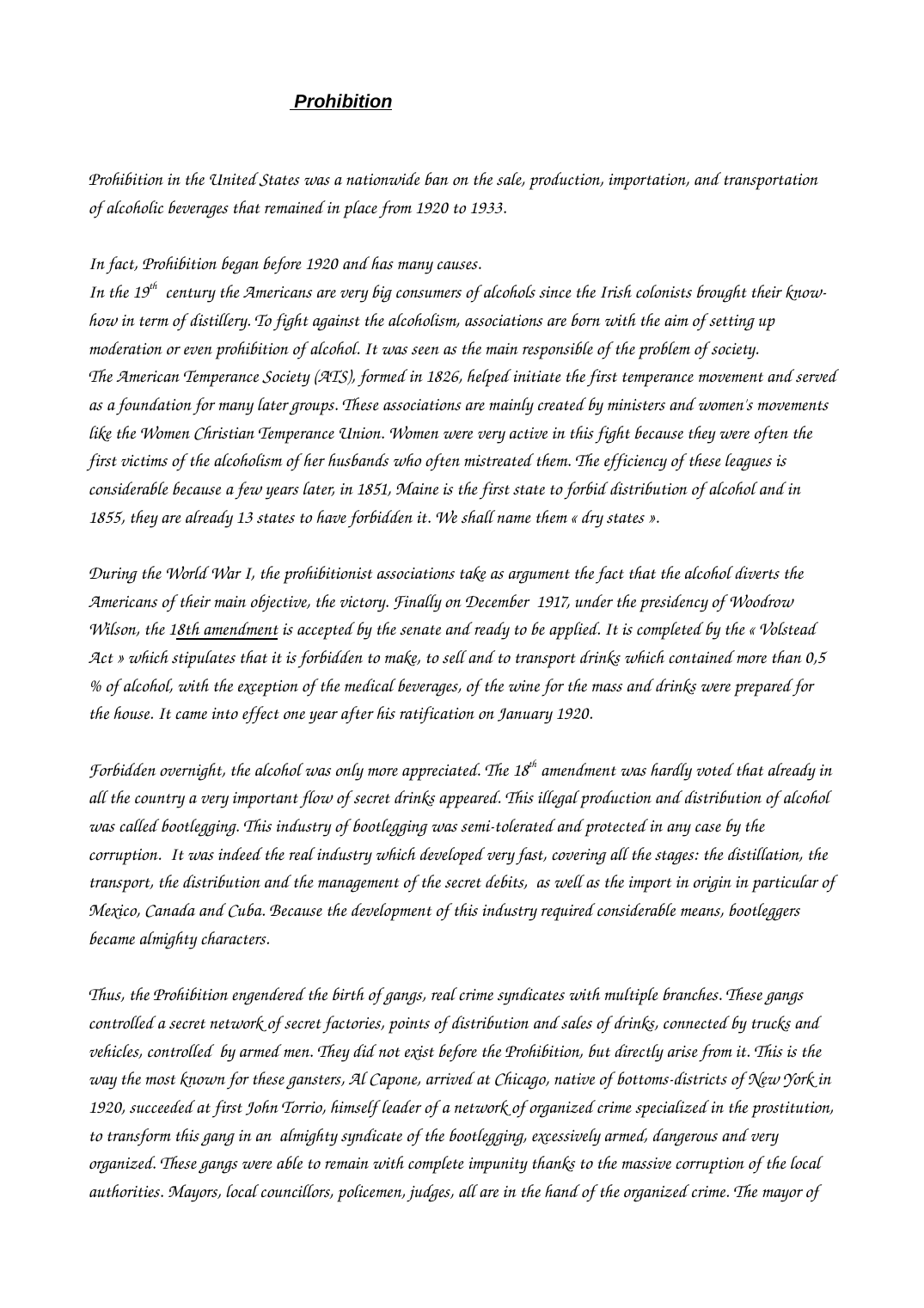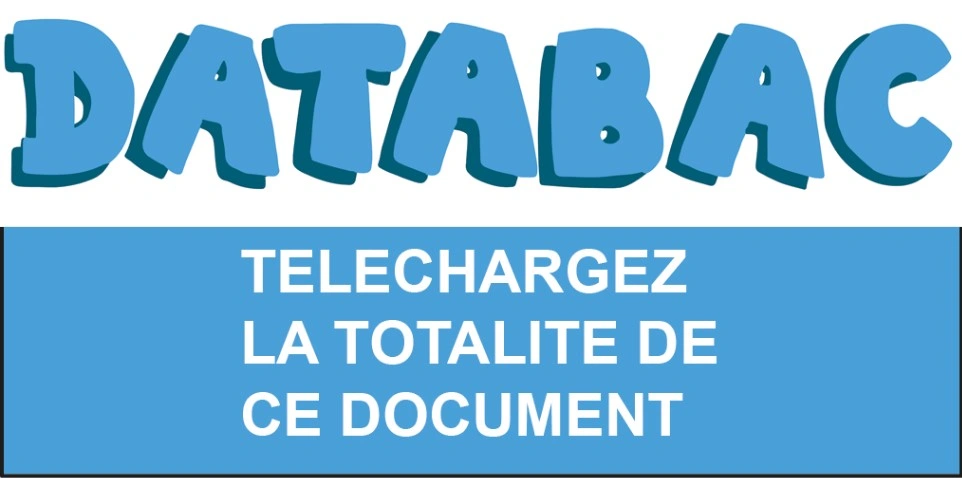prohibition
Publié le 22/05/2020

Extrait du document
«
Prohibition
Prohibition in the United States was a nationwide ban on the sale, production, importation, and transportation
of alcoholic beverages that remained in place from 1920 to 1933.
In fact, Prohibition began before 1920 and has many causes.
In the 19 th
century the Americans are very big consumers of alcohols since the Irish colonists brought their know
how in term of distillery. To fight against the alcoholism, associations are born with the aim of setting up
moderation or even prohibition of alcohol. It was seen as the main responsible of the problem of society.
The American Temperance Society (ATS), formed in 1826, helped initiate the first temperance movement and served
as a foundation for many later groups.
These associations are mainly created by ministers and women's movements
like the Women Christian Temperance Union. Women were very active in this fight because they were often the
first victims of the alcoholism of her husbands who often mistreated them. The efficiency of these leagues is
considerable because a few years later, in 1851, Maine is the first state to forbid distribution of alcohol and in
1855, they are already 13 states to have forbidden it. We shall name them « dry states ».
During the World War I, the prohibitionist associations take as argument the fact that the alcohol diverts the
Americans of their main objective, the victory. Finally on December 1917, under the presidency of Woodrow
Wilson, the 1 8th amendment is accepted by the senate and ready to be applied. It is completed by the « Volstead
Act » which stipulates that it is forbidden to make, to sell and to transport drinks which contained more than 0,5
% of alcohol, with the exception of the medical beverages, of the wine for the mass and drinks were prepared for
the house.
It came into effect one year after his ratification on January 1920.
Forbidden overnight, the alcohol was only more appreciated. The 18 th
amendment was hardly voted that already in
all the country a very important flow of secret drinks appeared. This illegal production and distribution of alcohol
was called bootlegging. This industry of bootlegging was semitolerated and protected in any case by the
corruption. It was indeed the real industry which developed very fast, covering all the stages: the distillation, the
transport, the distribution and the management of the secret debits, as well as the import in origin in particular of
Mexico, Canada and Cuba.
Because the development of this industry required considerable means, bootleggers
became almighty characters.
Thus, the Prohibition engendered the birth of gangs, real crime syndicates with multiple branches. These gangs
controlled a secret network of secret factories, points of distribution and sales of drinks, connected by trucks and
vehicles, controlled by armed men. They did not exist before the Prohibition, but directly arise from it. This is the
way the most known for these gansters, Al Capone, arrived at Chicago, native of bottomsdistricts of New York in
1920, succeeded at first John Torrio, himself leader of a network of organized crime specialized in the prostitution,
to transform this gang in an almighty syndicate of the bootlegging, excessively armed, dangerous and very
organized.
These gangs were able to remain with complete impunity thanks to the massive corruption of the local
authorities. Mayors, local councillors, policemen, judges, all are in the hand of the organized crime. The mayor of .
»
↓↓↓ APERÇU DU DOCUMENT ↓↓↓


